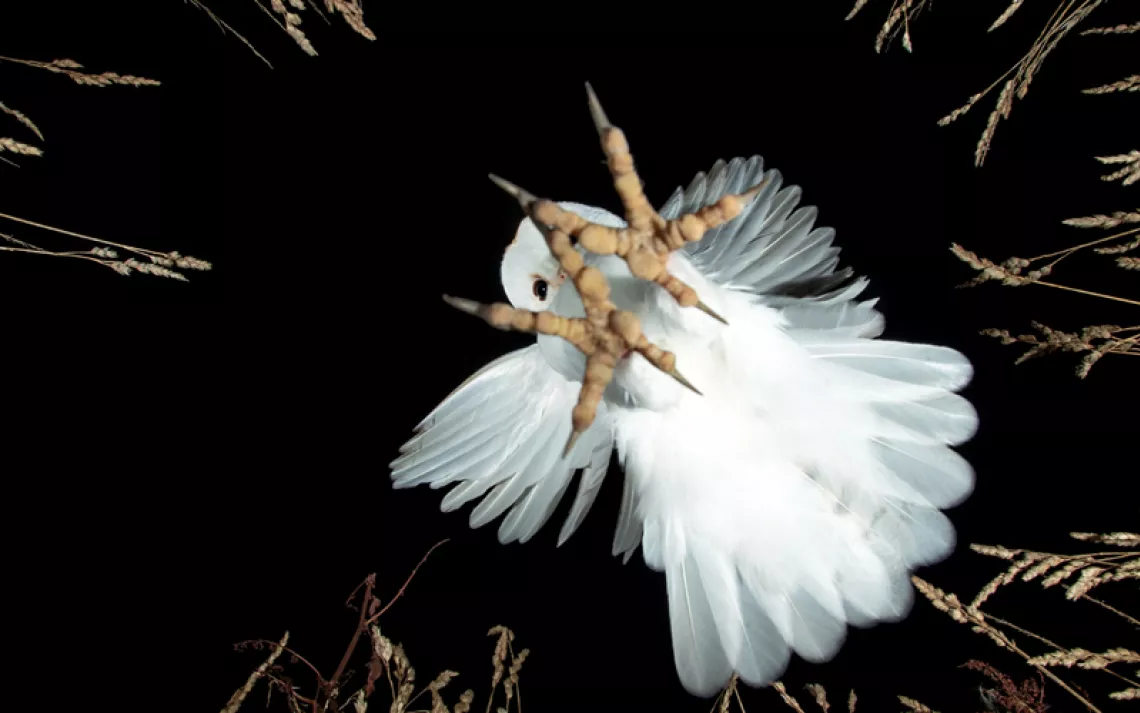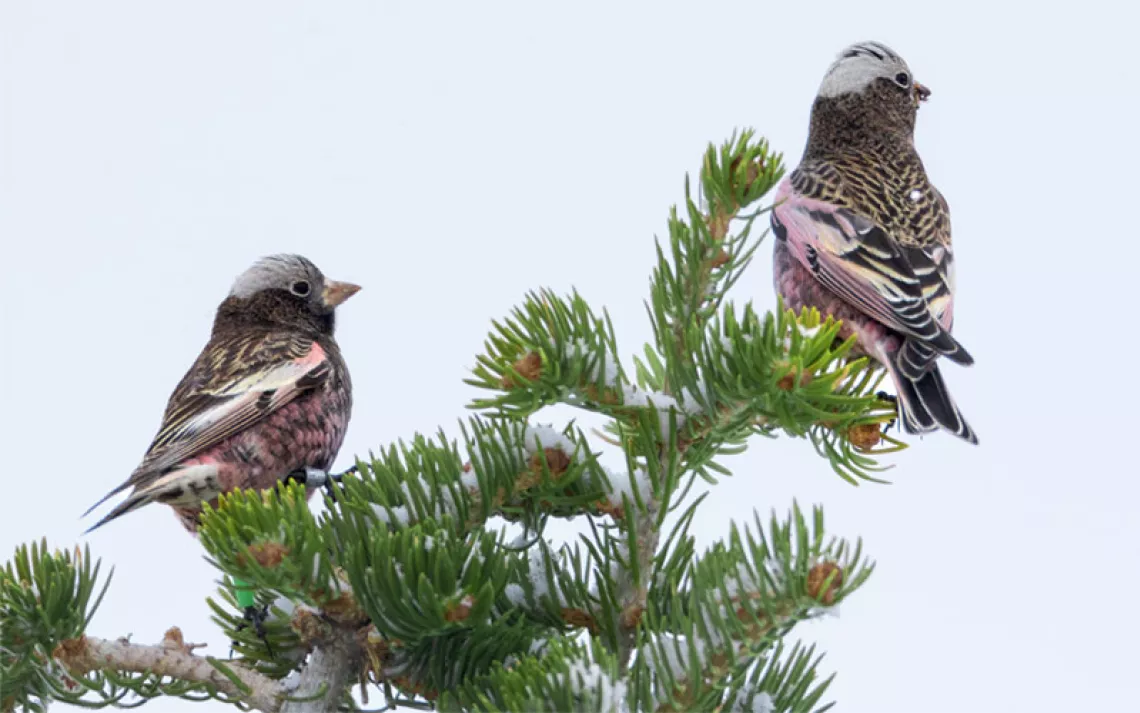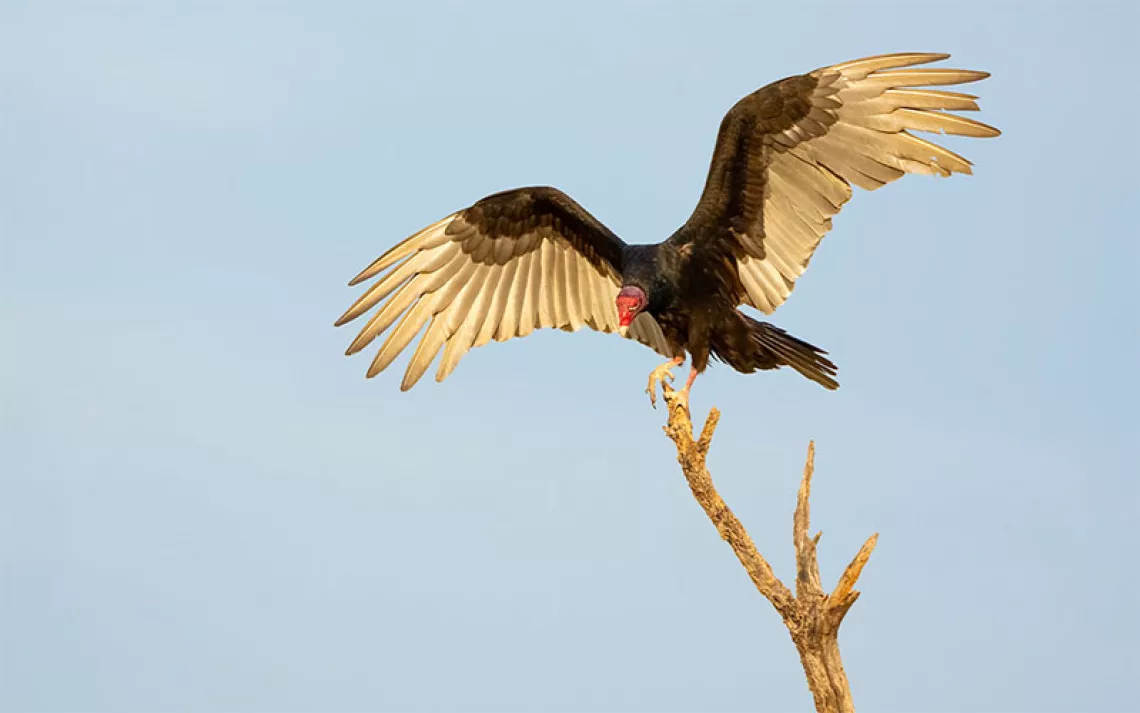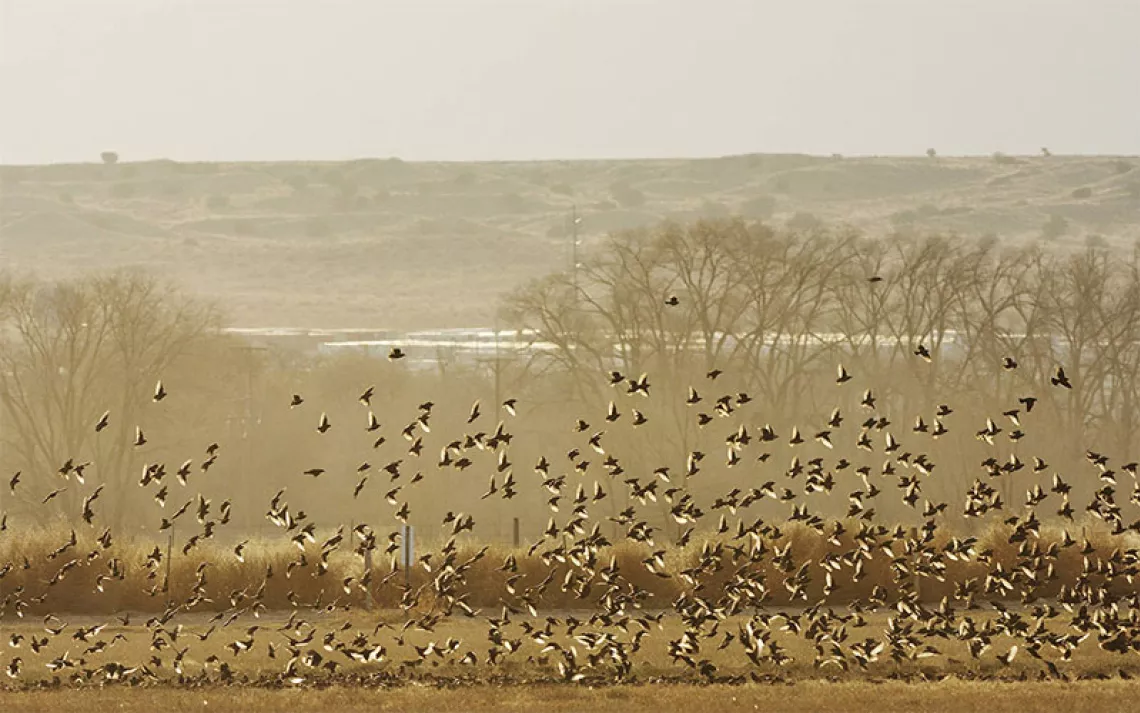How America’s Only Native Stork Saved Itself From Extinction
Perhaps humankind would be wise to take a cue from the humble wood stork
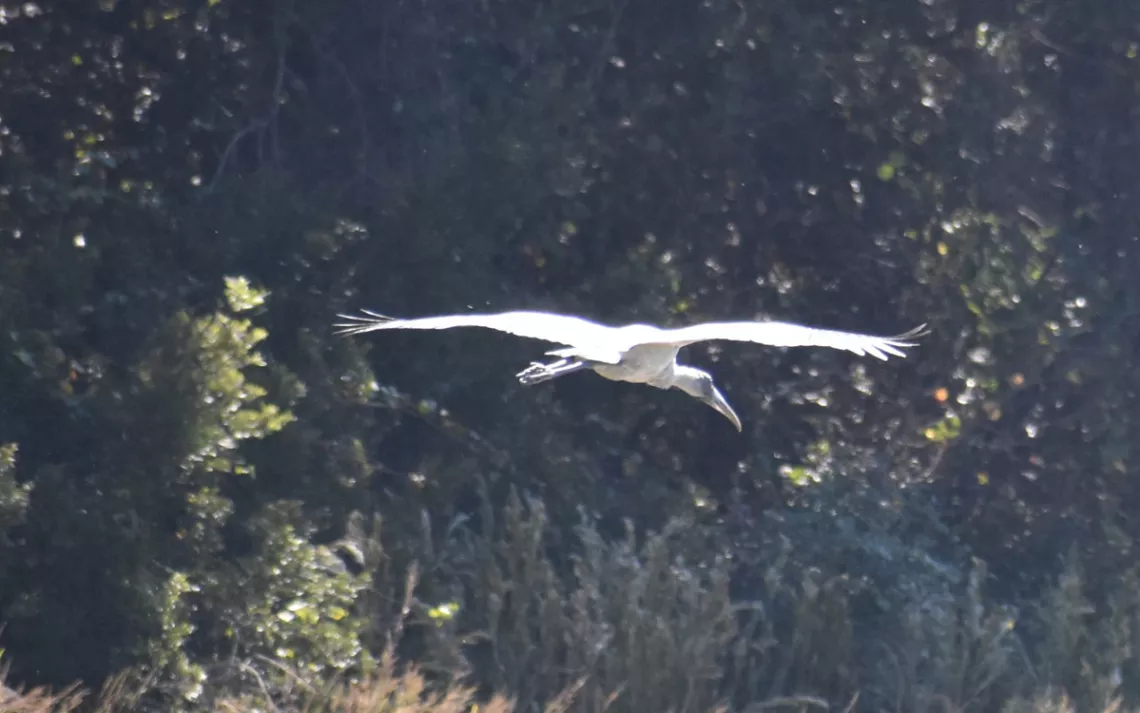
Photos courtesy of Jim Barfield
Scientists have predicted a future in which humans will have to abandon coastal cities in order to survive. When that time comes, we might look to America’s native wood stork, a venturesome species that narrowly evaded extinction by uprooting from its native home in the Everglades and seeking more suitable habitats.
In 1984, the big-billed, ungainly, and oddly beguiling black-and-white wood stork was consigned to the federal endangered-species list. Its numbers had plummeted from about 150,000 to about 10,000 by the 1980s, and scientists predicted that by the year 2000, the bird would be completely wiped out. Its habitat in the Everglades—where 70 percent of all wood storks dwelled—had been decimated by development and its nests were failing, or as birds died, simply abandoned.
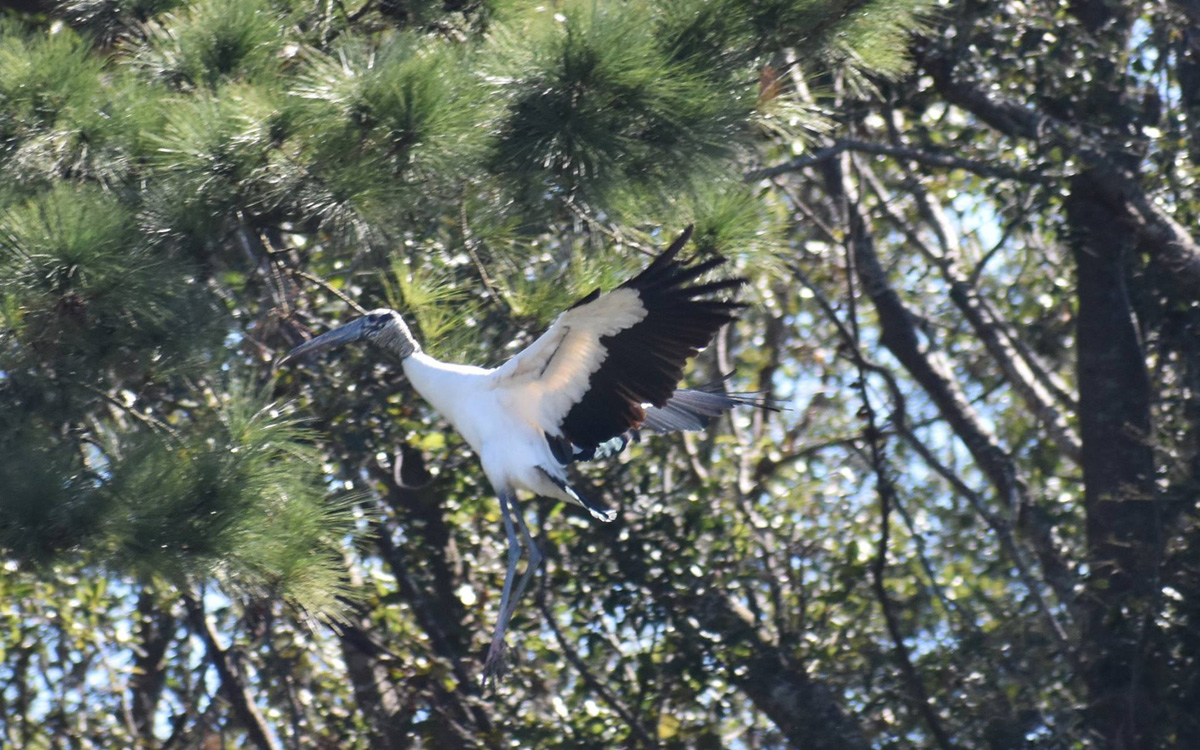 The stork, which stands four feet tall and boasts a regal five-foot wingspan, relies on the unique hydrology of wetlands to wade and forage for the astounding 400 pounds of fish a typical family consumes per nesting season. When the wood stork finds a fish, its bill snaps shut in a mere 25 milliseconds—13 times faster than the blink of a human eye.
The stork, which stands four feet tall and boasts a regal five-foot wingspan, relies on the unique hydrology of wetlands to wade and forage for the astounding 400 pounds of fish a typical family consumes per nesting season. When the wood stork finds a fish, its bill snaps shut in a mere 25 milliseconds—13 times faster than the blink of a human eye.
This very resourceful stork managed to save itself—with a little help from human hands—by migrating north in search of greener pastures; in other words, better, safer wetlands. “Wood storks are phenomenal in their ability to find food,” explains wildlife biologist Chuck Hayes of Savannah Coastal Refuges Complex, a network of wildlife sanctuaries spanning from near Hilton Head Island, South Carolina, to Wolf Island, near Darien, Georgia. “They routinely fly 50 miles a day to forage. In the mid-1990s, there was a pond off a reservoir in Georgia where I was working, and for the entire year, we’d never see a single stork. But if we drew the pond down, mimicking a shallow wetlands, the very next day a hundred storks would be wading through, feeding on fish.”
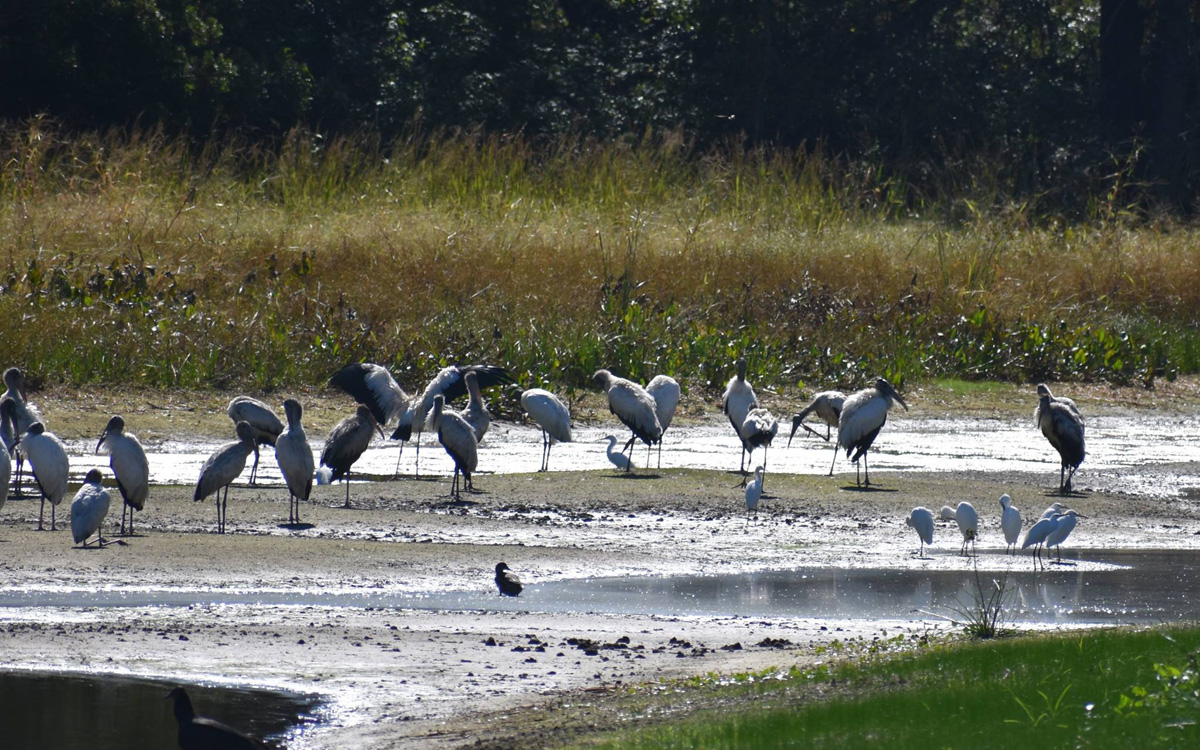
The first emigrants likely landed in Georgia marshes sometime in the 1980s, because in 1987, former Savannah Coastal Refuges biologist John Robinette noticed scattered stork nests at the 2,762-acre Harris Neck Wildlife Refuge in Georgia’s McIntosh County. Storks like to nest on islands surrounded by water and populated with alligators, which provide protection from predators like raccoons. “It helps to have the mafia surrounding you,” jokes Hayes. He explains that alligators are well fed for their protective services: Chicks and eggs often fall from the surrounding nests of storks, herons, and other birds.
That first year, 18 nests produced 43 flying wood stork chicks. Led by Robinette, scientists built nesting platforms—10-foot-tall poles with wire mesh “bowls” for nesting—that were kept safe from raccoons. They also planted cypress trees. “There were about a hundred platforms at the peak,” recalls Hayes. Occasionally, bird poop (from storks, egrets, and ibis) rendered the area’s soil too acidic for the trees to flourish. To bring the pH back up, the soil was periodically treated with lime. Once the trees got tall enough, the storks totally abandoned the platforms.
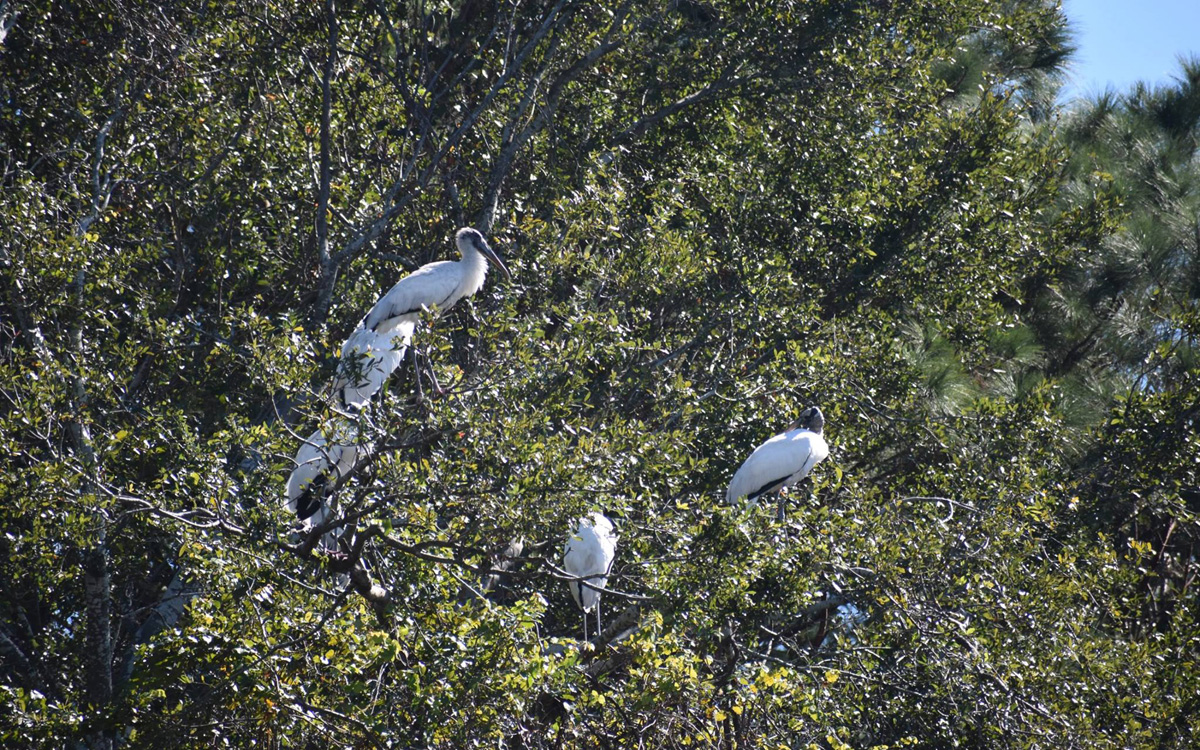 In the early 2000s, drought dried up 11 wood stork colonies in Georgia, and the birds were seen nesting in unusual places, including atop pine trees in people’s backyards. Fish and wildlife biologists from Savannah River Ecology Lab, which is part of the University of Georgia, began to band the chicks to track their survival. Each nest tends to produce two to three chicks, but the mortality rate for stork chicks is high. If wood stork chicks survived at an overall rate of 1.5 per nest, however, scientists were happy.
In the early 2000s, drought dried up 11 wood stork colonies in Georgia, and the birds were seen nesting in unusual places, including atop pine trees in people’s backyards. Fish and wildlife biologists from Savannah River Ecology Lab, which is part of the University of Georgia, began to band the chicks to track their survival. Each nest tends to produce two to three chicks, but the mortality rate for stork chicks is high. If wood stork chicks survived at an overall rate of 1.5 per nest, however, scientists were happy.
Meanwhile, six environmental and corporate groups—including the National Audubon Society, the U.S. Fish and Wildlife Service, Du Pont, and Westinghouse—developed stork-friendly ponds in Aiken County, South Carolina, near an old grist mill dam that had broken down in 1977. The ponds were stocked with fish, and the water level lowered during the summer so the storks could feed.
In 2014, the wood stork was removed from the endangered list and upgraded to threatened. Still, wildlife biologists throughout the Southeast remain eager to lend storks a helping hand. For instance, when scientists realized storks were nesting in ancient oaks on Sapelo Island, a barrier island off the coast of Georgia that’s accessible only by ferry, they also learned that ravenous raccoons were running from nest to nest, killing and eating chicks. In 2015, to keep raccoons from getting up the trees and to the nests, wildlife biologists cut down nearby saplings and wrapped wide sheets of metal usually used for roofing around the tree trunks. Raccoons could no longer reach the birds.
Thanks largely to such efforts, the wood stork now has nesting colonies in Georgia, South Carolina, and North Carolina, and has been seen off-season in Alabama and Mississippi. On rare occasions, biologists have spied it as far north as Virginia Beach. Hayes explains that once a colony hits a certain density, the storks begin to disperse and start new colonies elsewhere. “We’ve seen new colonies in southwest Georgia as well as private land near our offices in the city of Savannah, where there are at least 75 nests now, and even at the Savannah-Hilton Head Airport, near a runway.”
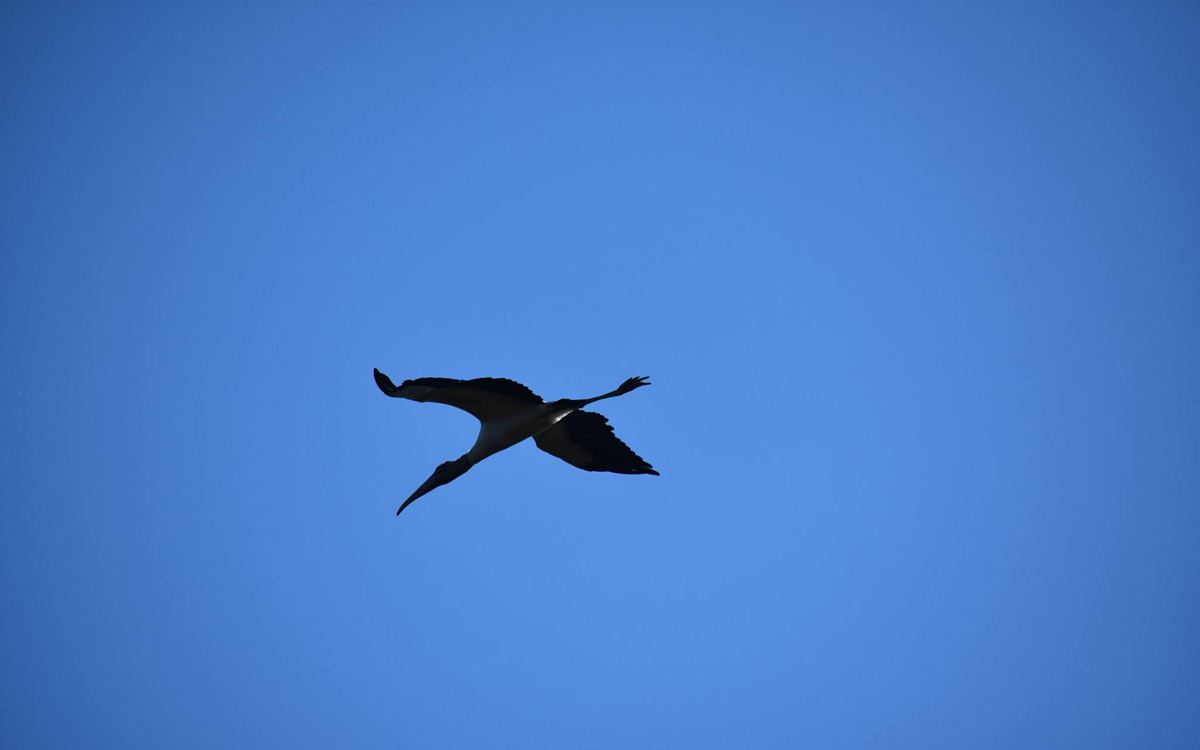 The wood stork’s story is a heartening one, and it’s part of a broader tale of hope. The Center for Biological Diversity has found that 85 percent of the birds in the United States protected by the Endangered Species Act have been able to slow population dips or even to increase numbers—at rates that far surpass those of unprotected birds. The center reported in 2015 that 10,058 wood stork nests had been counted across the bird’s range—an improvement from 6,245 in 1984.
The wood stork’s story is a heartening one, and it’s part of a broader tale of hope. The Center for Biological Diversity has found that 85 percent of the birds in the United States protected by the Endangered Species Act have been able to slow population dips or even to increase numbers—at rates that far surpass those of unprotected birds. The center reported in 2015 that 10,058 wood stork nests had been counted across the bird’s range—an improvement from 6,245 in 1984.
On a warm, sunny October day, this writer visited peaceful Woody Pond at the Harris Neck Refuge, where many dozens of storks had gathered off season. Small flocks of fluffy whiteness dotted the pines, and on occasion, I witnessed the birds taking flight. Up close, wood storks are awkward in appearance—but when soaring high, these creatures and their majestic snowy wings exhibit grandeur and grace. It’s a sight that leaves one thankful that they’ve rebounded, with a little help from their human friends.
 The Magazine of The Sierra Club
The Magazine of The Sierra Club
